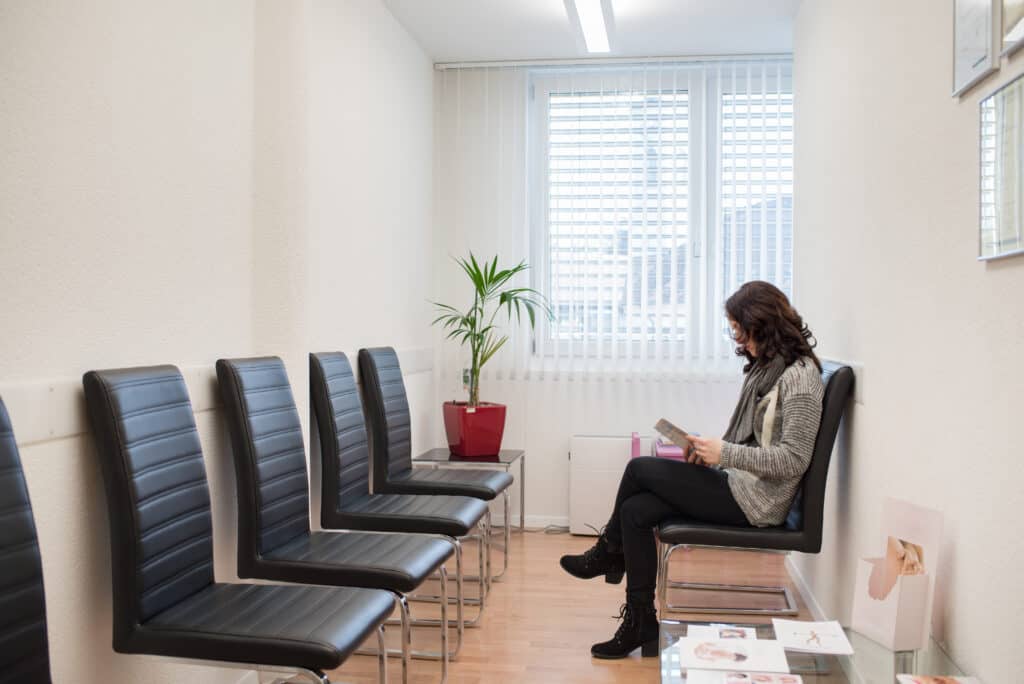Breast cancer remains one of the most common health concerns among women worldwide. Fortunately, advancements in medical technology have helped find breast cancer earlier, and coupled with effective treatment, have led to improved breast cancer survival. Screening tests are done on people who have no signs or symptoms of the disease. When it comes to breast cancer, mammography and breast magnetic resonance imaging (MRI) are the imaging tools used to screen for breast cancer early. Talking with your doctor about your family health history and other risk factors can help inform the conversation about the screening plan that’s right for you.
When Should You Get Screened for Breast Cancer?
Breast cancer screening recommendations depend on your risk of developing breast cancer. For women at average risk, regular mammograms typically start at the age of 40 and continue every year. However, those at higher risk, such as those with a personal or family history of breast cancer or other factors, may need to begin screening earlier or more often.
Screening Mammogram Versus Breast MRI
Mammography is the most common screening test widely available. It uses low-dose X-rays to capture images of the breast tissue. It’s the most effective screening test used today to find breast cancer in most people. Screening mammograms can find breast cancer early, sometimes up to 10 years before it can be detected by you or your doctor.
Breast MRI provides detailed images of the breast using magnetic fields and radio waves and can be used for screening women who are at a higher risk of developing breast cancer. Your doctor may recommend breast MRI in addition to annual screening mammography if you are at a higher risk of breast cancer.

What You Can Expect
Before a mammogram, you’ll be asked to remove deodorants, antiperspirants, perfumes, powders or lotion from your breasts and underarm area. These can show up on a mammogram and make it hard to read. Ideally, you’ll be told beforehand, however there should be alcohol wipes in the dressing rooms so you can remove them. You will be asked to undress from the waist up, so it’s a good idea to wear a shirt you can remove easily. During the exam, the technologist positions your breast between two plates, applying pressure to flatten the tissue and obtain clear images. You can expect to have two images taken of each breast. While this compression may be uncomfortable, it only lasts for a few seconds per image.
Before a breast MRI, you will be asked about allergies to dyes. You’ll remove any metal you may be wearing, undress and put on a gown. An IV will be started for the infusion of a contrast agent. You will be positioned on your stomach on a table that moves slowly through an MRI machine. You will be asked to be still as the table moves through the machine and images are recorded. This could take anywhere from thirty to forty-five minutes.
About 10% of people may be called back for further imaging after their screening mammogram.
Results and Follow-Up
While the waiting period can vary depending on the facility, before you leave, ask when you can expect your results. If you haven’t received your results within two weeks, reach out to your facility or your doctor. About 10% of people may be called back for further imaging after their screening mammogram. You may worry about being called back for additional imaging, but it’s important to note this doesn’t mean you have breast cancer. The need for further imaging just means that something was noticed on the mammogram that requires a closer look. If you go in for additional imaging, you may get your results that same day.
Breast imaging plays a crucial role in the early detection of breast cancer. You can talk with your doctor about a screening plan that is best for you. By understanding the imaging tests and recommendations for breast cancer screening and familiarizing yourself with the process, you can take proactive steps toward your breast health and overall well-being.


